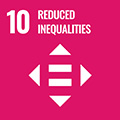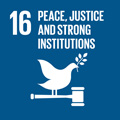- Docente: Brunetta Baldi
- Credits: 8
- SSD: SPS/04
- Language: Italian
- Teaching Mode: Traditional lectures
- Campus: Forli
-
Corso:
Second cycle degree programme (LM) in
International relations and diplomatic affairs (cod. 6058)
Also valid for Second cycle degree programme (LM) in International Relations and Diplomatic Affairs (cod. 9247)
-
from Sep 20, 2024 to Dec 12, 2024
Learning outcomes
The course provides conceptual tools for the study of minority nationalism from a comparative perspective. Students will be able to examine secessionist dynamics in contemporary democracies and will gain knowledge of plurinational federalism.
Course contents
The course will analyze minority nationalism in contemporary democracies, focusing on secession, asymmetrical regionalism, and federalism. It provides conceptual tools to study both the development and the containing of secessionism. It will cover the following case studies: Belgium (Flanders), Canada (Quebec), United Kingdom (Scotland and Northern Ireland), Spain (Catalonia and Basque Country), and Italy (Northen Italy and South Tyrol). Moreover, the cases of Switzerland, India, and Russia will be presented as examples of plurinational federalism.
Readings/Bibliography
The bibliography is organized into two parts: the first refers to concepts and theories, and the second to case studies (some available on Virtuale).
I. THEORY
Buchanan A., 1998, The international institutional dimension of secession, in P. B. Lehning (ed.), Theories of secession, Routledge, pp. 227-256.
Gagnon A., 2021, Multinational federalism: challenges, shortcomings and promises, in "Regional & Federal Studies", vol. 31, No. 1, pp. 99-114.
Hechter M., 2000, Containing nationalism, Oxford University Press: ch. 1 (pp. 1-17).
Kymlicka W., 1998, Is federalism a viable alternative to secession?, in P. B. Lehning (ed.), Theories of secession, Routledge, pp. 111-150.
Lecours A., 2021, Nationalism, Secessionism and Autonomy, Oxford University Press: chapters: 1,2,8.
Pavkovic, A. and Radan, P., 2007, Creating New States: Theory and Practice of Secession, Ashgate: ch. 1 (pp. 5-24).
Simeon R., 2015, Is Federalism Like Snow, and Is It Exportable? Some Cautionary Notes on the Study of Federalism, in Basta K., J. McGarry and R. Simeon (eds), Territorial pluralism: managing difference in multinational states, University of British Columbia Press, pp. 99-120.
Watts R., 2015, Can Federal Political Systems Accommodate National Minorities?, in Belser E. M. et al. (eds), States Falling Apart? Secessionist and Autonomy Movements in Europe, Stampfli Verlag, pp.37-46.
II. CASE-STUDIES
1. Belgium
Deschouwer K., 2013, The Belgian Federation: a labyrinth state, In J. Loughlin, J. Kincaid and W. Swenden (eds), Routledge Handbook of Regionalism and Federalism, Routledge, pp. 211-222.
Lecours A., 2021, Flanders – The Marginality of Secessionism, in A. Lecours, Nationalism, Secessionism and Autonomy, Oxford University Press, pp. 96-118.
Maddens B., 2018, Secessionist strategies: The case of Flanders, in Diego Muro and Eckart Woertz (Eds.), Secession and Counter-secession. An International Relations Perspective, Barcelona: CIDOB, pp. 55-62
Popelier P., 2015, Secessionist and Autonomy Movements in Flanders: The Disintegration of Belgium as the Chronicle of a Death Foretold?, in E. Belser et al. (eds), States falling apart? Secessionist and Autonomy Movements in Europe, Stämpfi Verlag, pp. 215-246.
2. Canada
Dumberry P., 2015, The Secession Question in Quebec, in “Diritto pubblico comparato ed europeo”, No. 2, pp. 357-380
Iacovino R., 2012, Partial Asymmetry and Federal Construction: Accommodating Diversity in the Canadian Constitution, in M. Weller e K. Nobbs (eds), Asymmetric Autonomy and the Settlement of Ethnic Conflicts, University of Pennsylvania Press, pp. 75-96.
Lecours A., 2021, Québec: A Weakening of Secessionism, in A. Lecours, Nationalism, Secessionism and Autonomy, Oxford University Press, pp. 160-169.
Lecours A., 2018, The two Quebec independence referendums: Political strategies and international relations, in Diego Muro and Eckart Woertz (Eds.) Secession and Counter-secession. An International Relations Perspective, Barcelona: CIDOB, pp. 63-68.
Resnick P., 2012, Canada. A Territorial or a Multinational Federation?, in F. Requejo and M. Caminal Badia (eds), Federalism, Plurinationality and Democratic Constitutionalism. Theory and Cases, Routledge, pp. 171-184.
3. United Kingdom
Anderson P. e Soeren K., 2020, Scotland, the UK and Brexit - At a Constitutional Crossroads: What Next for Scotland?, CIFE Policy Paper N°101, pp. 1-4; open access: https://repository.canterbury.ac.uk/item/8v1v4/scotland-the-uk-and-brexit-at-a-constitutional-crossroads-what-next-for-scotland.
Frosini, J., 2016, Was It an Act of Self-Dissolution? Brexit and the Future of the United Kingdom, in “Le istituzioni del federalismo”, Special Issue on Brexit, pp. 21-40.
Hepburn E., 2015, Scottish Nationalism and Independence Debates, in E. Belser et al. (eds), States falling apart? Secessionist and Autonomy Movements in Europe, Stämpfi Verlag, pp. 147-174.
Lecours A., 2021, Scotland. The Secessionist Surge, in A. Lecours, Nationalism, Secessionism and Autonomy, Oxford University Press, pp.72-95.
4. Spain
Caminal M., 2012, The Spanish "Estado de las Autonomías": Between Nationalist Resistance and Federal Horizon, in F. Requejo and M. Caminal Badia (eds), Federalism, Plurinationality and Democratic Constitutionalism. Theory and Cases, Routledge, pp. 324-364.
Cetrá D. and Swenden W., 2021, State nationalism and territorial accommodation in Spain and India, in “Regional & Federal Studies”, No.1, pp. 115-137 (only parts on Spain).
Lecours A., 2021, Catalonia. The Secessionist Turn (pp. 43-69) and Basque Country: Secessionism and Violence (pp. 143-151), in A. Lecours, Nationalism, Secessionism and Autonomy, Oxford University Press.
5. Italy
Dalle Mulle E., 2018, The nationalism of the rich, Routledge; capitolo 4: “Northern Italy” pp. 71-90.
Pallaver G. and Brunazzo M., 2017, Italy: The Pendulum of “Federal” Regionalism, in F. Karlhofer and G. Pallaver (eds), Federal Power-Sharing in Europe, Nomos, pp. 147-180.
Lecours A., 2021, South Tyrol. From Irredentism and Secessionism to Autonomy, in A. Lecours, Nationalism, Secessionism and Autonomy, Oxford University Press, pp.121-141.
6. Switzerland
Bhattacharyya H., 2007, India and Switzerland as multinational federations, in Burgess M. and J. Pinder (eds), Multinational federations, Routledge, pp. 212-224.
Dardanelli P., 2012, Multi-lingual but mono-national: exploring and explaining Switzerland's exceptionalism, in F. Requejo and M. Caminal Badia (eds), Federalism, Plurinationality and Democratic Constitutionalism. Theory and Cases, Routledge, pp. 295-323.
Broschek, J., 2015, Pathways of Federal Reform: Australia, Canada, Germany, and Switzerland, in “Publius: TheJournal of Federalism”, Vol. 45, No.1, pp. 51-76.
7. India
Bhattacharyya H., 2007, Federalism and competing nations in India, in Burgess M. and J. Pinder (eds), Multinational federations, Routledge, pp. 50-67.
Kohli, A., 2004, India: Federalism and the Accomodation of Ethnic Nationalism, in U. Amoretti and N. Bermeo (eds), Federalism and Territorial Cleavages, The Johns Hopkins University Press, pp. 281-299.
Cetrá D. and Swenden W., 2021, State nationalism and territorial accommodation in Spain and India, in “Regional & Federal Studies”, No.1, pp. 115-137 (only parts on India).
8. Russia
Bowker M., 2004, Russia and Chechnya: the issue of secession, in “Nations and Nationalism”, Vol. 10, No. 4, pp. 461-478.
Ross C., 2007, Russia’s multinational federation, in M. Burgess and J. Pinder (eds), Multinational Federations, Routledge, pp. 108-126.
Gribanova G., 2011, Russian federalism: does it work?, in R. Saxena (ed), Varieties of federal governance, Foundations, pp. 86-103.
Kolstø P., 2016, Introduction: Russian nationalism is back – but precisely what does that mean?, in P. Kolstø and H. Blakkisrud (eds.) The New Russian Nationalism. Imperialism, Ethnicity and Authoritarianism 2000–2015, Edinburgh University Press, pp. 1-7.
Sharafutdinova G., 2013, Gestalt Switch in Russian Federalism. The Decline in Regional Power under Putin, in “Comparative Politics”, Vol. 45, No. 3, only pp. 367-373.
Teaching methods
The course adopts the seminar method with compulsory attendance (at least 70%) and a maximum number of 25-30 students. After a short round of lectures on concepts and theories (first part of the bibliography), students are expected to present and discuss readings from the second part of the bibliography.
Assessment methods
Grades are based on a final paper (70%) and participation in workshops and group discussions (30%). Only students who have accrued the attendance requirement (70% of classes) will be admitted to the final exam.
Teaching tools
PowerPoint.
Office hours
See the website of Brunetta Baldi
SDGs




This teaching activity contributes to the achievement of the Sustainable Development Goals of the UN 2030 Agenda.
